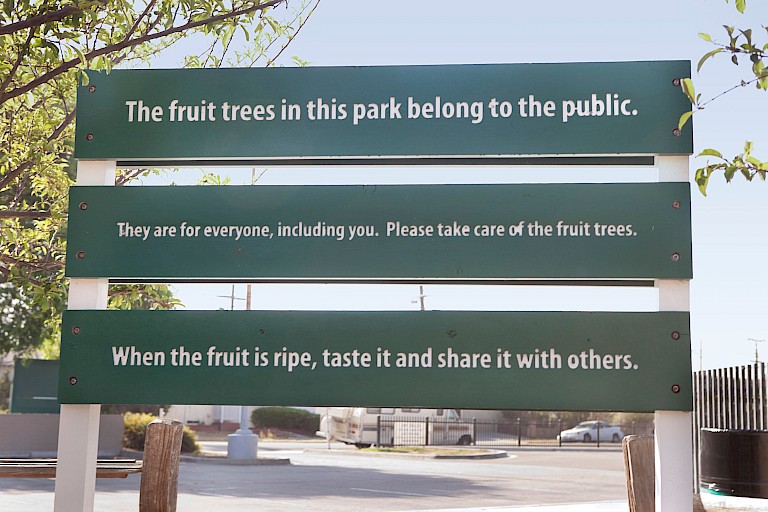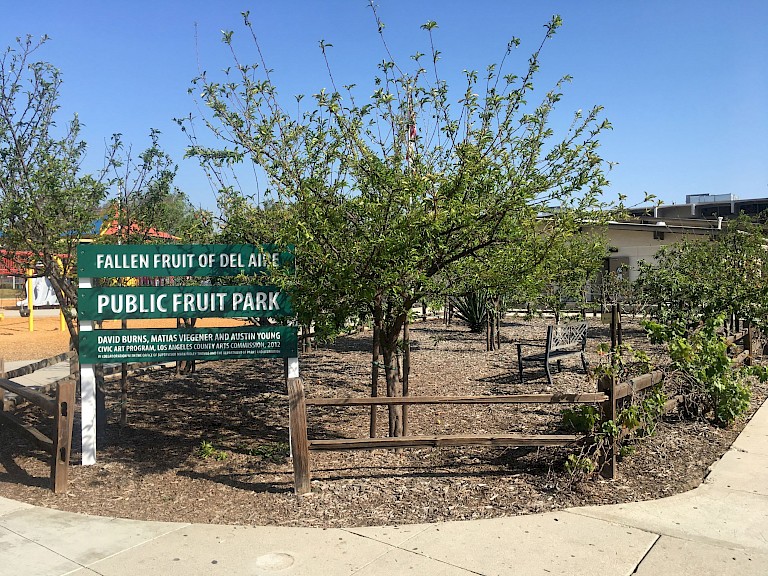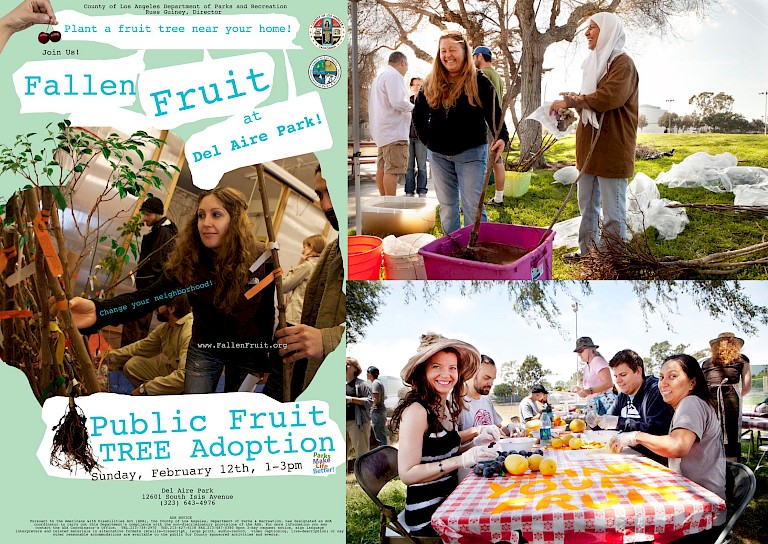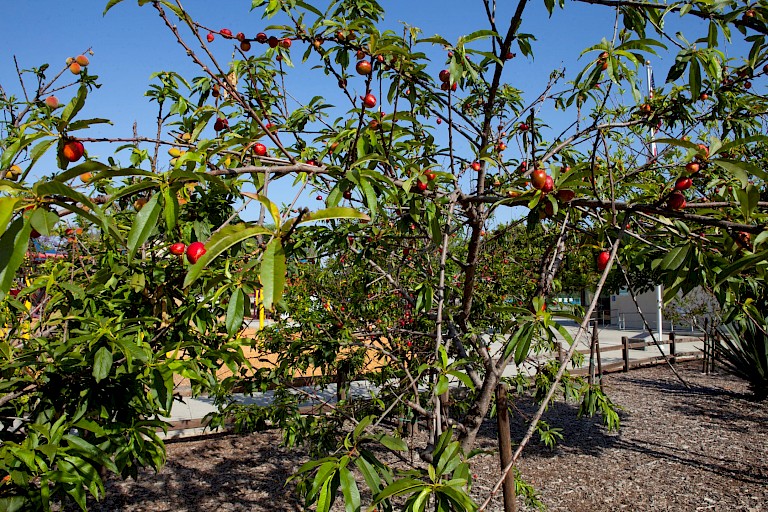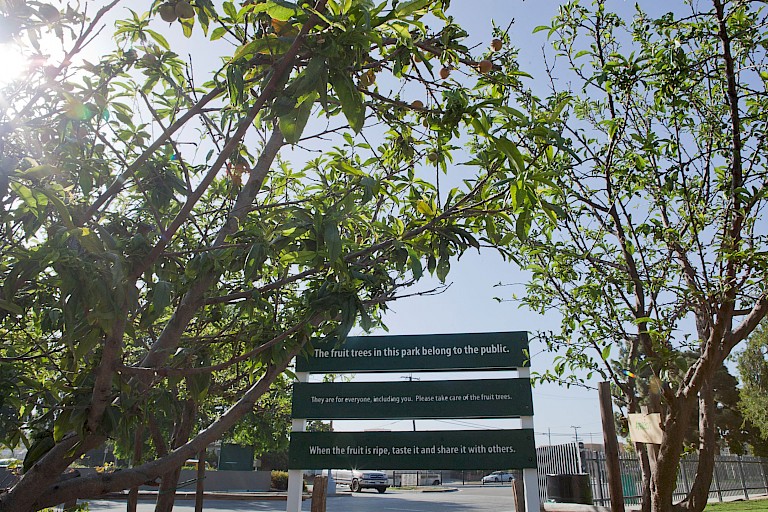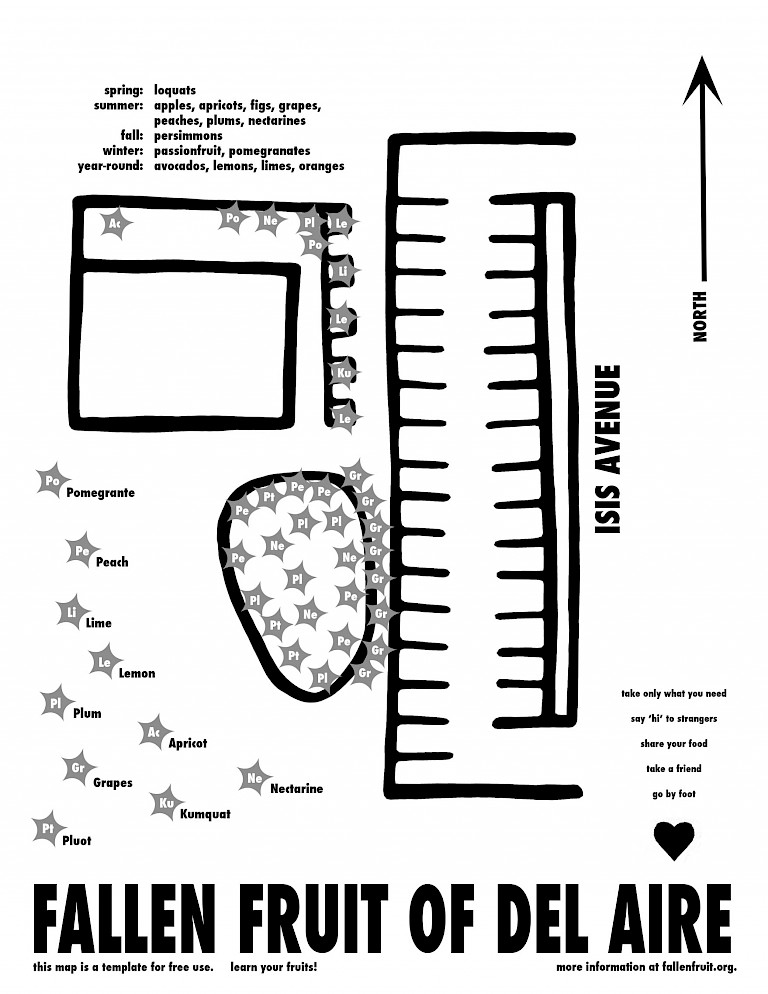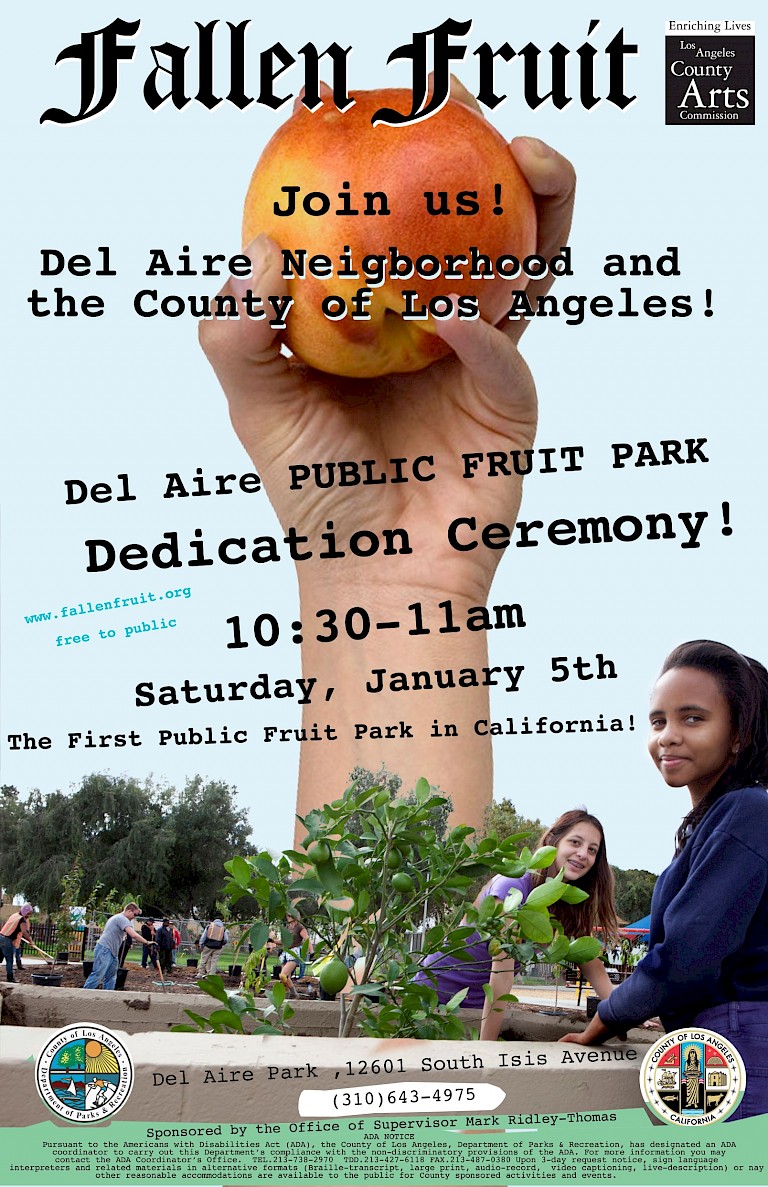



Following approval, community engagement activities began and included a jam making “fruit jam,” a tree adoption, and communal tree planting days, culminating in the launch of Del Aire Public Fruit Park in 2012. The park features a center of 12 trees, ringed by 24 additional trees spread throughout the park grounds. Beyond the park perimeter, 48 trees were adopted by residents and planted at the edges of their properties, blurring the boundaries between public and private spaces, and encouraging a community of sharing that emanates outward from the park. Today the park is thriving, maintained by residents, and recently revisited by Fallen Fruit members who hosted a pruning workshop for the community.
A sign at Del Aire Public Fruit Park reads:
The fruit trees in this park belong to the public.
They are for everyone, including you. Please take care of the fruit trees.
When the fruit is ripe, taste it and share it with others.
Following the completion of Del Aire Public Fruit Park, the Fallen Fruit collective has been continued by artists David Burns and Austin Young, for whom the park served as a key stepping stone. Viewing the project as a success, the county invited Fallen Fruit to propose additional works and the collective has since completed a Monument to Sharing comprised of plantings within a sculptural installation featuring a community-sourced multilingual poem, as well as two sites on Los Angeles’ massive Park-to-Playa project, a pedestrian trail through green spaces and parks that will ultimately lead from the city to the ocean.
In addition to serving as a meaningful public art project in its own right, Del Aire Public Fruit Park functioned as a testing ground that gave L.A. county confidence to further welcome fruit trees on public spaces. Additionally, the project underscores the intertwined nature of public and private realms, as well as the ways in which communities can be reconceived as nourishing spaces. In this vein, it fits alongside initiatives related to healthy and locally sourced food, as well as within an arts and activism landscape that ranges from Guerilla Grafters’ rogue interventions to add fruit bearing branches to public plantings to Fritz Haeg’s Edible Estates, where participants transformed their own front lawns into nutritious gardens.
Fallen Fruit’s name is derived from a stance articulated in Roman law and in a Biblical passage in Leviticus, “When you reap the harvest of your land, you shall not reap all the way to the edges of your field… you shall not pick your vineyard bare, or gather the fallen fruit…you shall leave them for the poor and the stranger” (19:9-10, quoted in Viegener, Burns, and Young). Within this edict, Young noted the implied personal relationship with community, commenting that, “To us, it’s inspiring to think that as people, we should leave some of what we have and part of who we are for others we many never know” (quoted in Dunne).
The fruit trees planted in Del Aire will live there longer than many residents and Fallen Fruit members observe that the trees function as multifaceted subjects/objects within their communities, as David Burns noted: “Nothing in this world happens in isolation or by one person…The fruit trees themselves are landmarks…It becomes a fact and those facts are what allow people to change their minds, and change their relationships not just to the space around them, but to each other in the space around them” (interview with researcher).
Select Bibliography
Brown, Patricia Leigh. “Tasty, and Subversive, Too.” New York Times. May 11, 2013. https://www.nytimes.com/2013/05/12/us/fruit-activists-take-urban-gardens-in-a-new-direction.html
Dunne, Carey. “Planting an Endless Fruit Orchard that Could Branch Around the World.” Hyperallergic. January 14, 2016. https://hyperallergic.com/267798/planting-an-endless-fruit-orchard-that-could-branch-around-the-world/
Owen Driggs, Janet. “Fallen Fruit and the ‘Thin End of the Wedge.’” KCET. April 2, 2013. https://www.kcet.org/shows/artbound/fallen-fruit-and-the-thin-end-of-the-wedge
Viegener, Matias, David Burns, and Austin Young. “Fallen Fruit: A Mapping of Food Resources in Los Angeles.” Journal of Aesthetics and Protest. 3(June 2004). http://www.joaap.org/new3/viegeneretal.html
